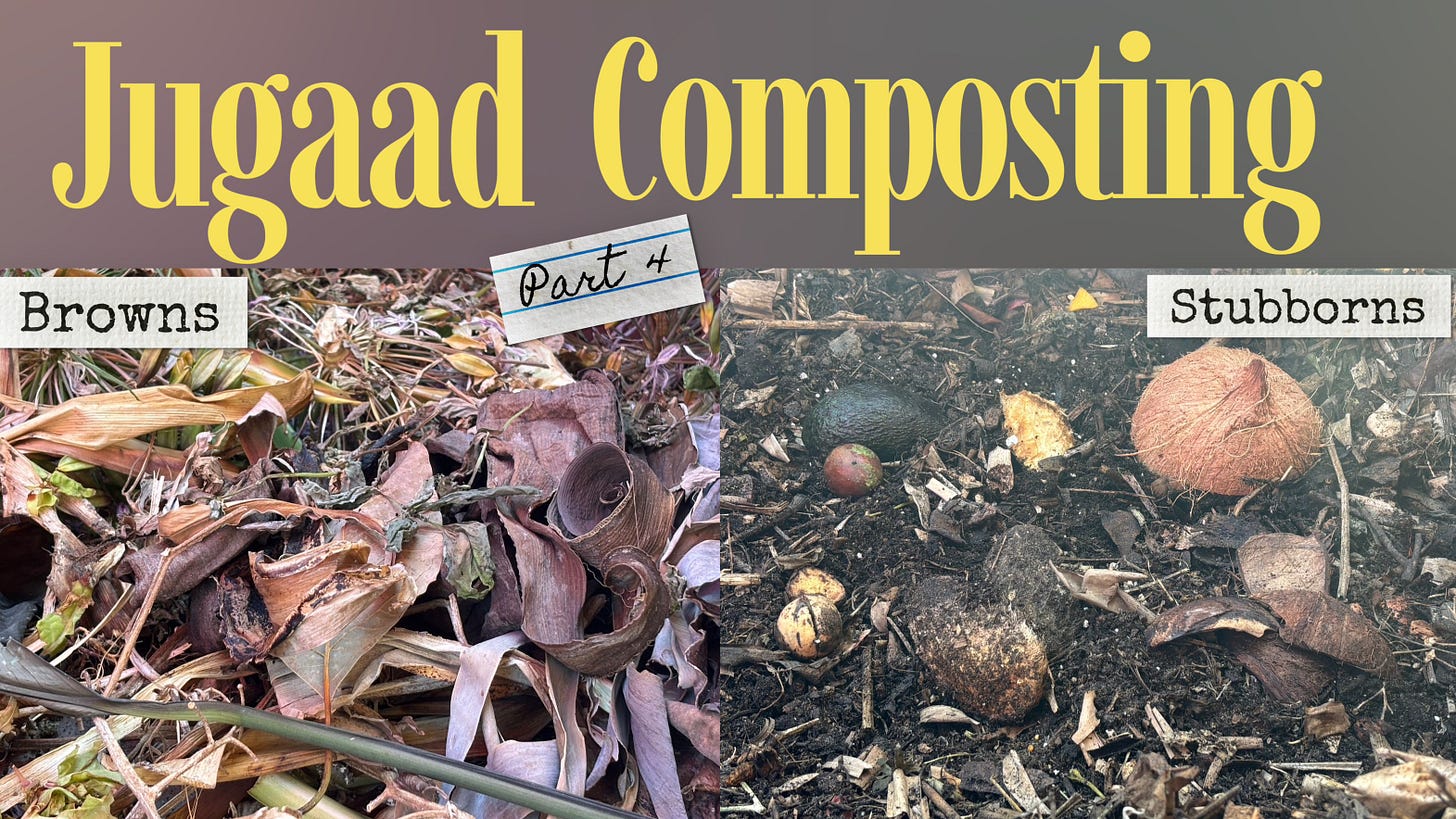Editor’s note: Jugaad is a Hindi word often used to describe clever, resourceful, and low-cost problem-solving - usually with whatever materials are available. This series, written by Sangeetha, captures her no-fuss, no-frills journey into home composting - one jugaad at a time. In Part 1 , Part 2 and Part 3 of Jugaad Composting, Sangeetha took us on a cross-continental trip and shared some hard-learned hacks & tips that she picked up along the way.
Now, in Part 4, we pick up where she left off.
By this time, you’d have thought we’d have gotten tired.
But no.
Catalyzed by our original batch of compost, we continued the same process of using smaller plastic bins that we’d juggled around our LA apartment.
We’d leave the lids on during rain, and take them off when it was sunny to give the pile the right balance of moisture and heat.
Then, about a year later, something unexpected happened.
One of our raised garden bed kits didn’t lead to any plant growth. But instead of seeing it as a failure, we saw potential — and rebranded it as our new compost bin. It was a big jump in scale: from 4 small ~10 litre bins to a ~500+ litre capacity setup - more than enough for a household of 4!).
Our learnings from the big bed:
Big piles compost faster.
You can divide the bed into “active” and “resting” zones - build a pile and then leave it untouched, and start a new one beside it.
Even avocado seeds break down (takes a few months)
Groundnut shells and drumsticks take much longer than you’d expect. Wet grind them first in a blender to speed things up.
Don’t stress about carbon-to-nitrogen ratios. Just use the sniff test - if it doesn’t stink, you are doing a great job!
Freeze your food waste if you can’t toss your food waste into the compost bin daily and prefer a weekly routine (thank you, giant U.S. freezers!)
Seeds tossed in directly into the compost can yield an unplanned melon patch 😅 (tip: dry and crush them before tossing in).
If you have a small garden, you can use your compost right there.
Got a lot of garden waste? Don’t panic—pile it in the sunniest corner, grab a $20 garden scissor from Home Depot, and gradually trim it down on weekends. You’ll be amazed how a huge heap shrinks once dried and shredded.
We did consider electric shredders on Amazon (starting at ~$100). Might be worth it if you're short on time and all in.
Lately, we’ve gotten a bit more ambitious: pista shells, corn cobs, mango seeds and coconut shells.
The rule of thumb?
If it’s plant-based and you have a big enough pile, it’ll break down eventually - you can hammer them down to lend a helping hand.
Coming up next:
So, why do I still compost — even after all the mess, smell, and seeds-that-won’t-die? In the final part of the series, I reflect on what composting has taught me — and why I think it’s one of the most powerful small actions you can take today.
Written by Sangeetha for I Will Circle Back.
If this piece resonated, hit the ❤️ or share it with someone navigating their own journey.




